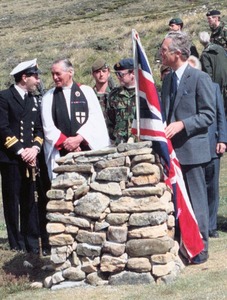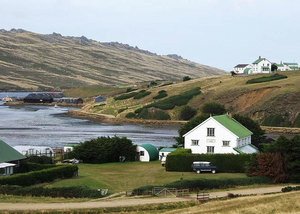STRONG, JOHN
c 1654 - 1693 from England
sea captain was born around 1654, probably the son of John Strong and Barbara Houlditch of Totnes, Devon. In 1678 he married a widow, Mary Hulcombe, who already had a daughter, and in 1689 Agnes, a daughter of Captain Abraham Holditch. He had no children.
His early career is unclear, but he was boatswain and then mate of the Welcome around 1680. He became chief mate on the James and Mary in 1687 during her successful expedition to recover treasure from a Spanish ship wrecked off Hispaniola, and her captain in 1689. A Royal Warrant in that year, naming him commander of the Welfare, authorised him to seize French ships and required him to transmit intelligence to the Admiralty. Trade was another purpose, but primarily he was to recover treasure from a Spanish ship wrecked in 1654 off the coast of Ecuador. Observations by Richard Simson, dedicated to the Earl of Radnor, supplement Strong's terse journal.
The Welfare was London built, about 270 tons, with 40 guns and a crew of 90, including officers and divers from the 1687 expedition. Strong sailed on 12 October 1689 and on 27 January 1690, having been forced south, he sighted land then known as Hawkins Land. Simson records quizzically that 'the inhabitants were exceedingly numerous. The pengwins gave us the first reception...mustered in infinit numbers they seemed to salute us with graceful bows...expressing their curiosity and good breeding'. He also noted eagles and 'hawks which though they had long wings suffered themselves to be taken up by our men'. A young fox (warrah) was kept until it jumped overboard. Simson concluded that 'if not quite destitute of wood the Islands would make a noble plantation. It bears good Herbage and a great variety of land and sea fowle'. Strong sailed into a sound '24 fathoms of water 3 leagues wide'. Noting that there were many good harbours he anchored several times for water and provisions. His landing is believed to be the first made on the Falkland Islands. One of the landing parties returned with 'Pengwins and other fowls and seals'. Strong cleared the Sound on 1 February, observing 'it is about 17 leagues - Fawkland Sound as I named it'.
The Welfare headed for the Magellan Strait, spending over three months battling through, and duly reached the area of the wreck, but failing to locate it reluctantly turned and headed for home, reaching North Shields (Northumberland) on 14 June 1691. The failure was aggravated by the loss of 22 men who died at sea or were killed or captured by hostile Spaniards, but trading and the capture of two French ships was some compensation. The ship's sponsors however lost an estimated £12,000.
Strong respected and was respected by his men. He was tough - 'the only man to hold out against the cold' - and brave with presence of mind. His employers had trusted him to keep account of the treasure from the Hispaniola wreck and although he was later arrested on a charge of embezzling silver from it, he was discharged after examination. He was suspicious of the Indians in the Magellan Strait and, while treating them civilly, described them as not to be trusted. But he misunderstood the superficial courtesy of the Spaniards and believed that they were trustworthy - until he lost eleven men who were being feasted on the coast when they were suddenly attacked by hostile Spaniards.
Strong died at Corunna (Spain) on 11 November 1693. In his will he left the residue of his estate valued at over £1000 to his wife Agnes, after bequests to her family and to his step daughter. His wife was buried at Littleton (Middlesex) in October 1749.
A memorial commemorating Strong's landing was unveiled near Port Howard in 1990.
External links
See: Port Howard celebrates 150 years (You Tube video)
Comments
Revisions
December 2019 One additional photograph added; two external links (video) added

